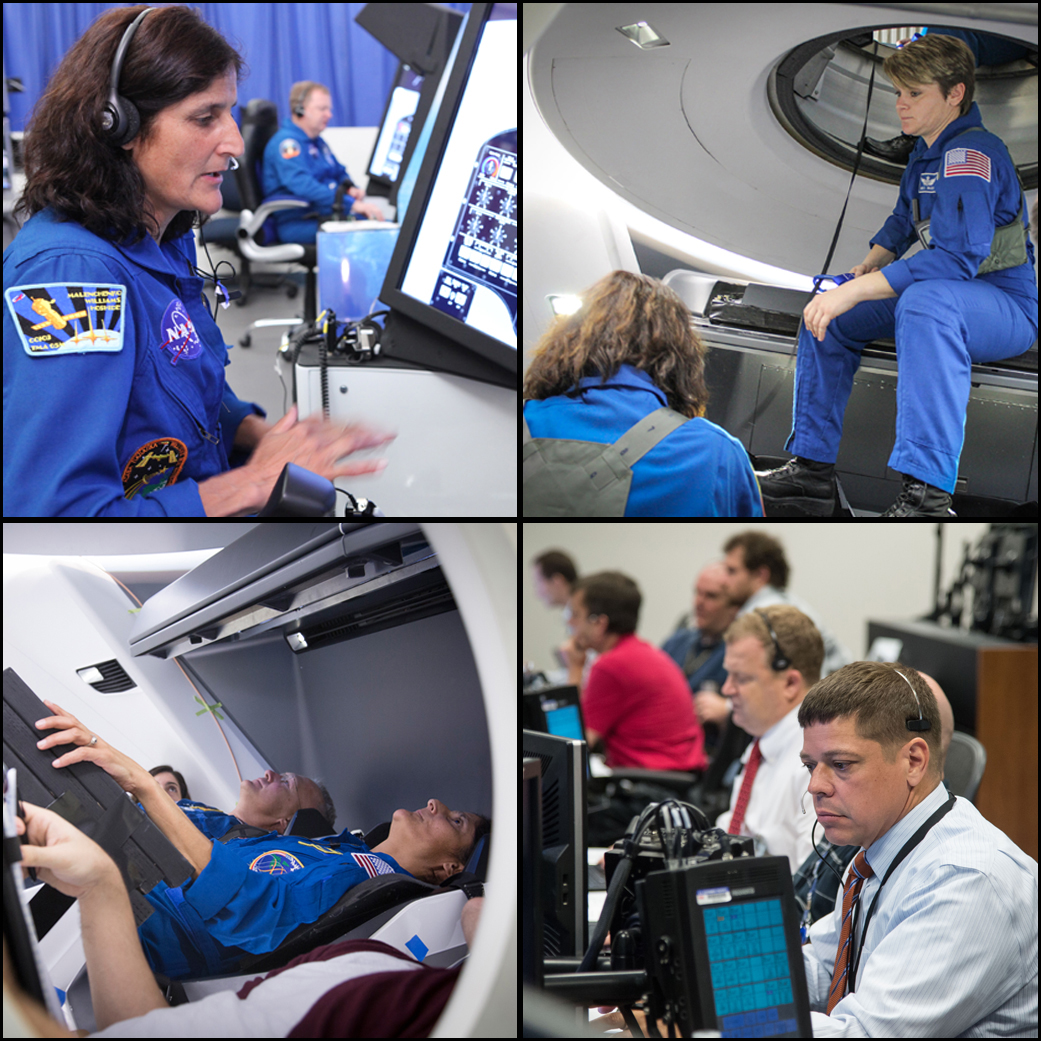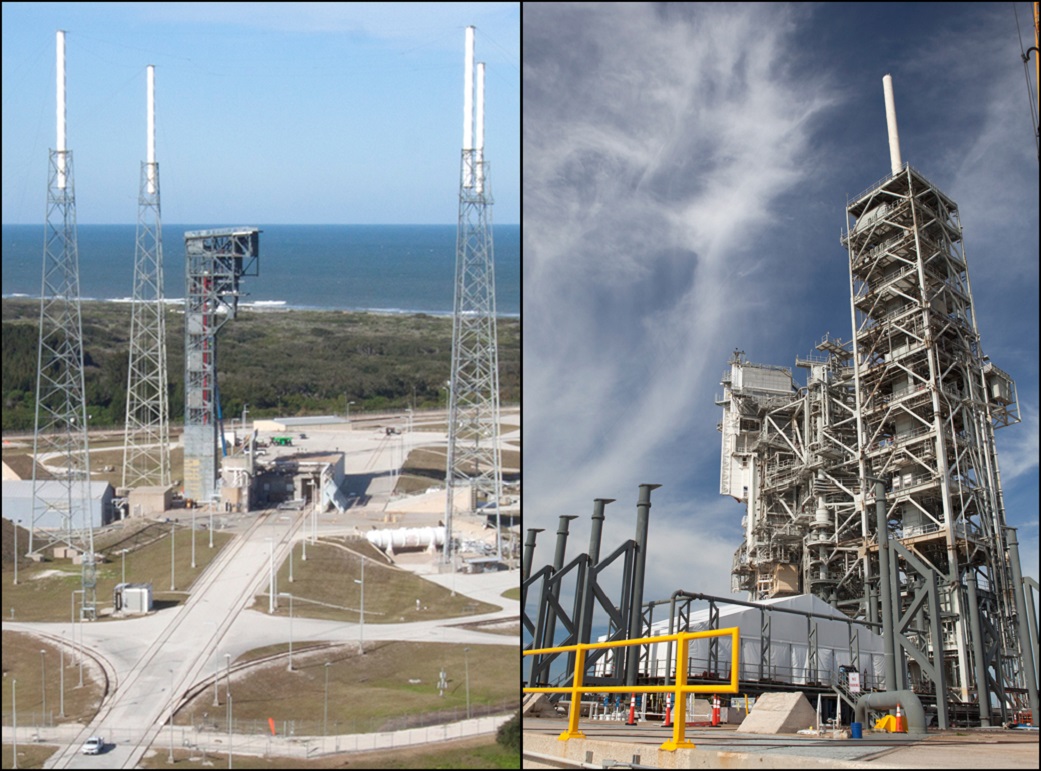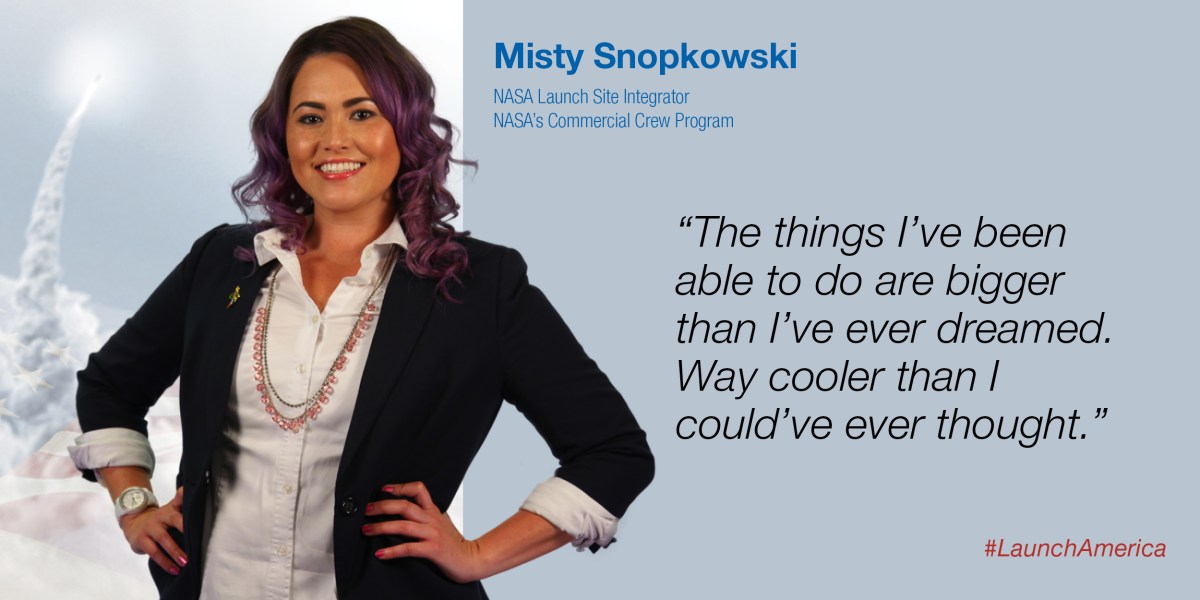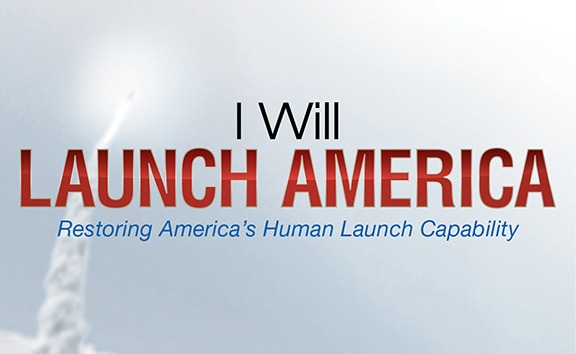 NASA’s Commercial Crew Program astronauts work side-by-side with Boeing and SpaceX engineers to evaluate their systems and trainers as they each prepare to return launches to the International Space Station from American soil. They have performed fit checks in mockup spacecraft, assessed the spacecraft’s display panel and controls among numerous other systems: http://go.nasa.gov/1tuHinI
NASA’s Commercial Crew Program astronauts work side-by-side with Boeing and SpaceX engineers to evaluate their systems and trainers as they each prepare to return launches to the International Space Station from American soil. They have performed fit checks in mockup spacecraft, assessed the spacecraft’s display panel and controls among numerous other systems: http://go.nasa.gov/1tuHinI
Category: SpaceX
Commercial Crew Gains Momentum from Manufacturing, Launch Facilities
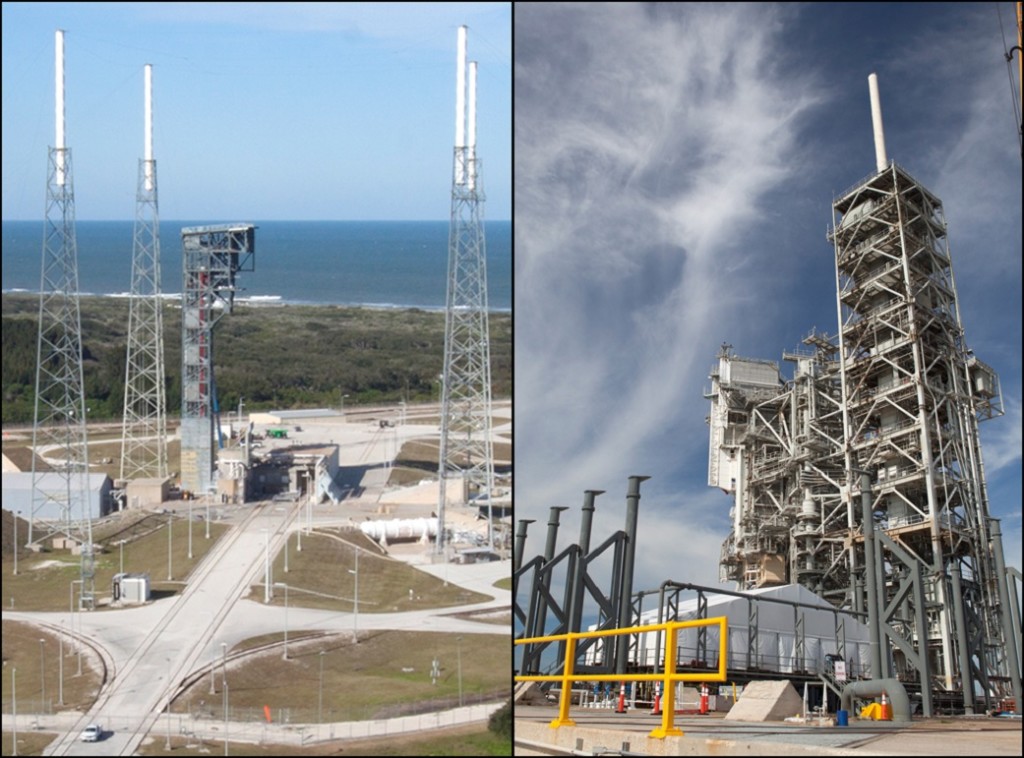 Manufacturing bays and launch pads are scenes of careful activity midway through 2016 as Boeing and SpaceX, partners with NASA’s Commercial Crew Program, build the prototype spacecraft that will precede assembly of the flight vehicles that will perform test flights. Both companies are building separate spacecraft and launch systems capable of carrying astronauts some 250 miles into space where they will perform groundbreaking research aboard the International Space Station. Boeing’s Starliner is being assembled at the Commercial Crew and Cargo Processing Facility at NASA’s Kennedy Space Center in Florida, while SpaceX is manufacturing its Crew Dragon spacecraft at the company’s headquarters and factory in Hawthorne, California.
Manufacturing bays and launch pads are scenes of careful activity midway through 2016 as Boeing and SpaceX, partners with NASA’s Commercial Crew Program, build the prototype spacecraft that will precede assembly of the flight vehicles that will perform test flights. Both companies are building separate spacecraft and launch systems capable of carrying astronauts some 250 miles into space where they will perform groundbreaking research aboard the International Space Station. Boeing’s Starliner is being assembled at the Commercial Crew and Cargo Processing Facility at NASA’s Kennedy Space Center in Florida, while SpaceX is manufacturing its Crew Dragon spacecraft at the company’s headquarters and factory in Hawthorne, California.
Both companies are also hard at work modifying their respective launch pads. SpaceX is making numerous changes at Launch Complex 39A at Kennedy so the former shuttle launch pad can instead host Falcon 9 rockets lofting Crew Dragons into orbit. A couple of miles south, at the adjacent Cape Canaveral Air Force Station, the Crew Access Tower has been constructed at Space Launch Complex 41, so astronauts will be able to climb inside the Starliner on launch day as it stands pointed to the sky atop a United Launch Alliance Atlas V rocket. Read more about the progress under way in commercial crew so far in 2016: http://go.nasa.gov/1TZLGAW
Companies Advance in 2016 on Path to Flight
The companies building the next generation of human-rated spacecraft with NASA’s Commercial Crew Program made their biggest advances so far as they finalized designs and began building prototype spacecraft. The careful, meticulous efforts by Boeing and SpaceX, along with NASA astronauts, engineers and spaceflight specialists, are vital markers in the path to flight as the team work to restore America’s ability to launch astronauts to the International Space Station from the United States.
“We knew 2016 would be a critical year as Boeing and SpaceX build qualification and flight hardware, and test the integrated systems to ensure the rockets and spacecraft function as designed,” said Kathy Lueders, manager of NASA’s Commercial Crew Program. “Their careful design, analysis and early prototype testing during the last several years has put us on the right course, and now 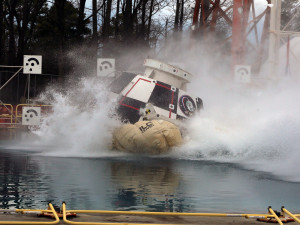 we are excited to see flight hardware coming together. The companies are excited, too, but we know there are many steps ahead to successfully and safely complete these flight tests and begin operational missions to the International Space Station.”
we are excited to see flight hardware coming together. The companies are excited, too, but we know there are many steps ahead to successfully and safely complete these flight tests and begin operational missions to the International Space Station.”
Learn more about the spacecraft and subsystem qualification testing, at http://go.nasa.gov/1YeXox2
Watch Commercial Crew Progress
Spacecraft are under construction, launch infrastructure is being modified and systems testing of all sorts is underway as NASA’s Commercial Crew Program works closely with Boeing and SpaceX to advance the new generation of American spacecraft designed to carry astronauts to the International Space Station from the United States. Boeing and SpaceX are building flight-like CST-100 Starliners and Crew Dragons, respectively, for evaluations prior to their flight test campaigns. Watch the testing, qualification and hardware buildup completed so far in 2016 in the video below toward the program’s goal of developing safe, reliable, cost-effective crew transportation systems.
I Will Launch America: Launch Site Integrator Misty Snopkowski
Misty Snopkowski has worked on human spaceflight initiatives since 2003, building up expertise with the Space Shuttle and International Space Station Programs and now standing on the precipice of the new era in human spaceflight with NASA’s Commercial Crew Program.
“I got to work up until the very last shuttle launch in 2011, which was a pretty amazing period in time,” Snopkowski said. “Then I joined commercial crew. You flip the script and go into a brand new program. I was this young person who got to start at the very beginning of a new program and most people don’t ever get that opportunity.” Read more at http://go.nasa.gov/1OBQPgg
Astronaut Visits Starliner Component Makers in California

 Veteran astronaut Megan McArthur toured two of the companies building components for Boeing’s CST-100 Starliner spacecraft recently and met with some of the employees who are designing and making sensors and circuit boards the spacecraft and its crews will rely on to steer precisely to the International Space Station. She was joined by Chris Ferguson, a former space shuttle commander who is now Boeing’s director of Crew and Mission Operations for Commercial Crew. Boeing is one of two companies under contract with NASA’s Commercial Crew Program to develop spacecraft systems to take astronauts to the space station. The missions will enhance research by increasing the number of crew members aboard the orbiting laboratory.
Veteran astronaut Megan McArthur toured two of the companies building components for Boeing’s CST-100 Starliner spacecraft recently and met with some of the employees who are designing and making sensors and circuit boards the spacecraft and its crews will rely on to steer precisely to the International Space Station. She was joined by Chris Ferguson, a former space shuttle commander who is now Boeing’s director of Crew and Mission Operations for Commercial Crew. Boeing is one of two companies under contract with NASA’s Commercial Crew Program to develop spacecraft systems to take astronauts to the space station. The missions will enhance research by increasing the number of crew members aboard the orbiting laboratory.
McArthur, who flew as a mission specialist on STS-125 and captured the Hubble Space Telescope with the shuttle’s robotic arm, visited Advanced Scientific Concepts in Santa Barbara, California, on April 7 where she surveyed the 3D Flash Light Detection and Ranging sensors the company is making. The LIDAR gear will let Starliner crews see the station in all conditions in space during a mission. The next day, McArthur visited Qual-Pro Corp in Gardena, California, where engineers are making the circuit boards that will allow Starliner systems to communicate with each other.
“It’s never about the individual or just the crew members who are in space,” McArthur said. “It’s always about the team of folks who are getting us ready to fly, who are getting the hardware ready to fly and keeping us safe while we’re up there. It’s not something we can ever succeed at by ourselves.” 
The Team That Will Launch America
We’ve profiled some of the NASA and aerospace industry professionals behind Commercial Crew’s success and more are on the way as we debut our new “I Will Launch America” page featuring the engineers and spaceflight specialists designing, testing and soon to be operating the next generation of human-rated spacecraft to fly astronauts from American soil. From launch system specialists who are determining what the rocket needs to have aboard for a safe launch, to the team evaluating the control systems in the spacecraft that astronauts will use, the people on our “I Will Launch America” series are designing and building the future of American spaceflight. Rad more at http://go.nasa.gov/1QTTAZO
May 5, 1961: Al Shepard and Freedom 7
 Astronaut Al Shepard, above with Gus Grissom, made history 55 years ago today as he launched in Freedom 7 atop a Mercury-Redstone rocket to become the first American in space. The rocket lofted Shepard using a 78,000-pound thrust engine, less powerful than the abort engine clusters in development by Boeing and SpaceX for NASA’s Commercial Crew Program spacecraft.
Astronaut Al Shepard, above with Gus Grissom, made history 55 years ago today as he launched in Freedom 7 atop a Mercury-Redstone rocket to become the first American in space. The rocket lofted Shepard using a 78,000-pound thrust engine, less powerful than the abort engine clusters in development by Boeing and SpaceX for NASA’s Commercial Crew Program spacecraft.
Spaceport Magazine Features Commercial Crew
If you have not already, be sure to check out the May edition of Kennedy Space Center’s Spaceport Magazine. It features several Commercial Crew Program stories and numerous awe-inspiring NASA programs and projects.
Read it now, at http://go.nasa.gov/1NPNcs6.
I Will Launch America: Dayna Ise
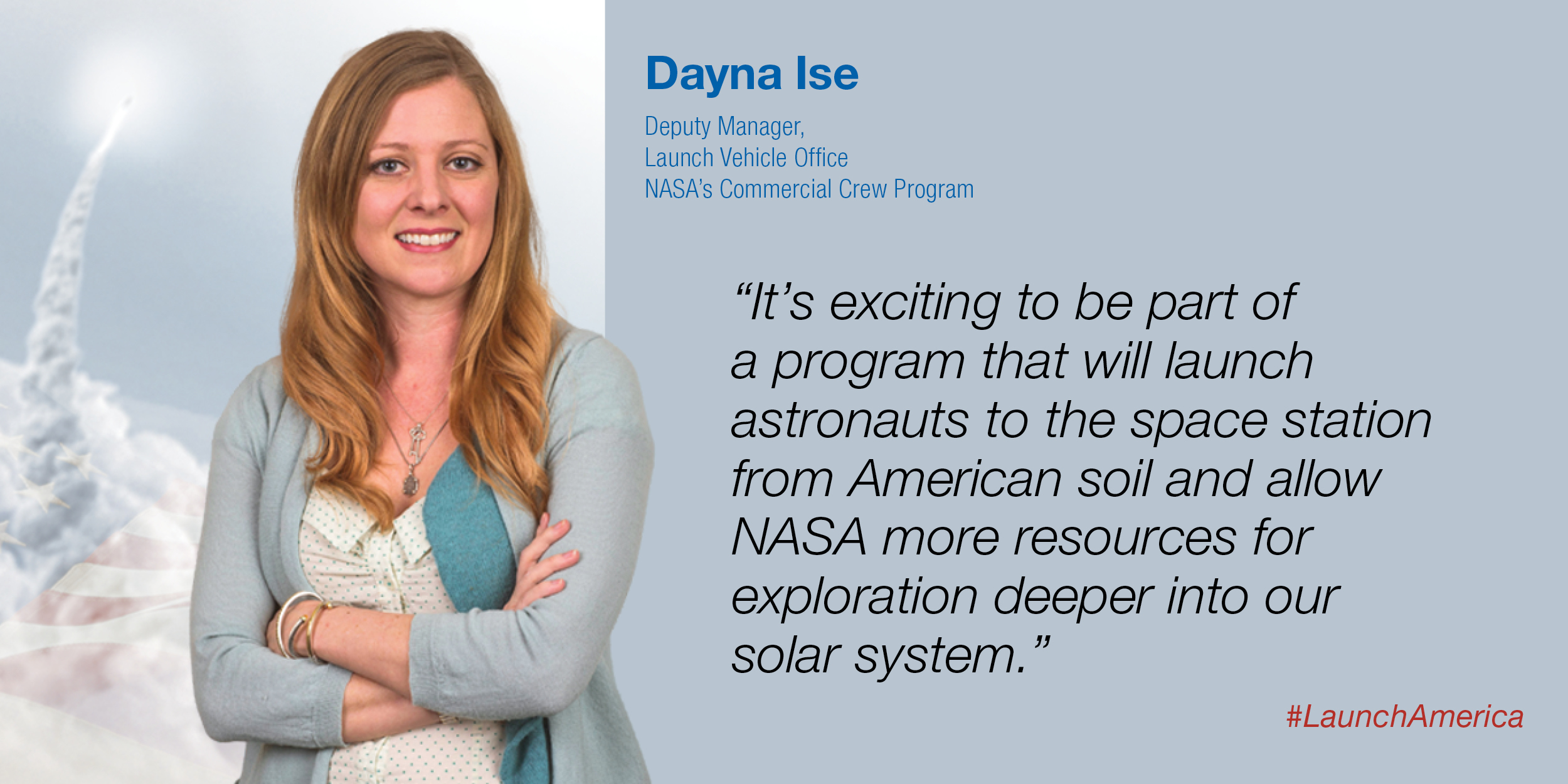 American-built rockets will soon once again launch astronauts from American soil, and Dayna Ise, an engineer at NASA’s Marshall Space Flight Center in Huntsville, Alabama, is excited to be part of the program making this possible.
American-built rockets will soon once again launch astronauts from American soil, and Dayna Ise, an engineer at NASA’s Marshall Space Flight Center in Huntsville, Alabama, is excited to be part of the program making this possible.
“Of all the projects I have been part of with NASA in my 15 years, this is easily the work I am most proud of,” said Ise, who started her career working on space shuttle main engines. “I joined the team early on, almost five years ago, and it’s been fun to see it grow. It’s exciting to be part of program that will launch astronauts to the space station from American soil and allow NASA more resources for exploration deeper into our solar system.”
NASA’s ultimate goal with the Commercial Crew Program is to establish reliable and cost-effective human access to space. In the Launch Vehicle Office, Ise works with industry partners to ensure all launch vehicle requirements and standards are met before launching astronauts for NASA.
Learn more about Dayna and the work she is doing to return human spaceflight launches to the U.S. http://go.nasa.gov/1VrYllI

